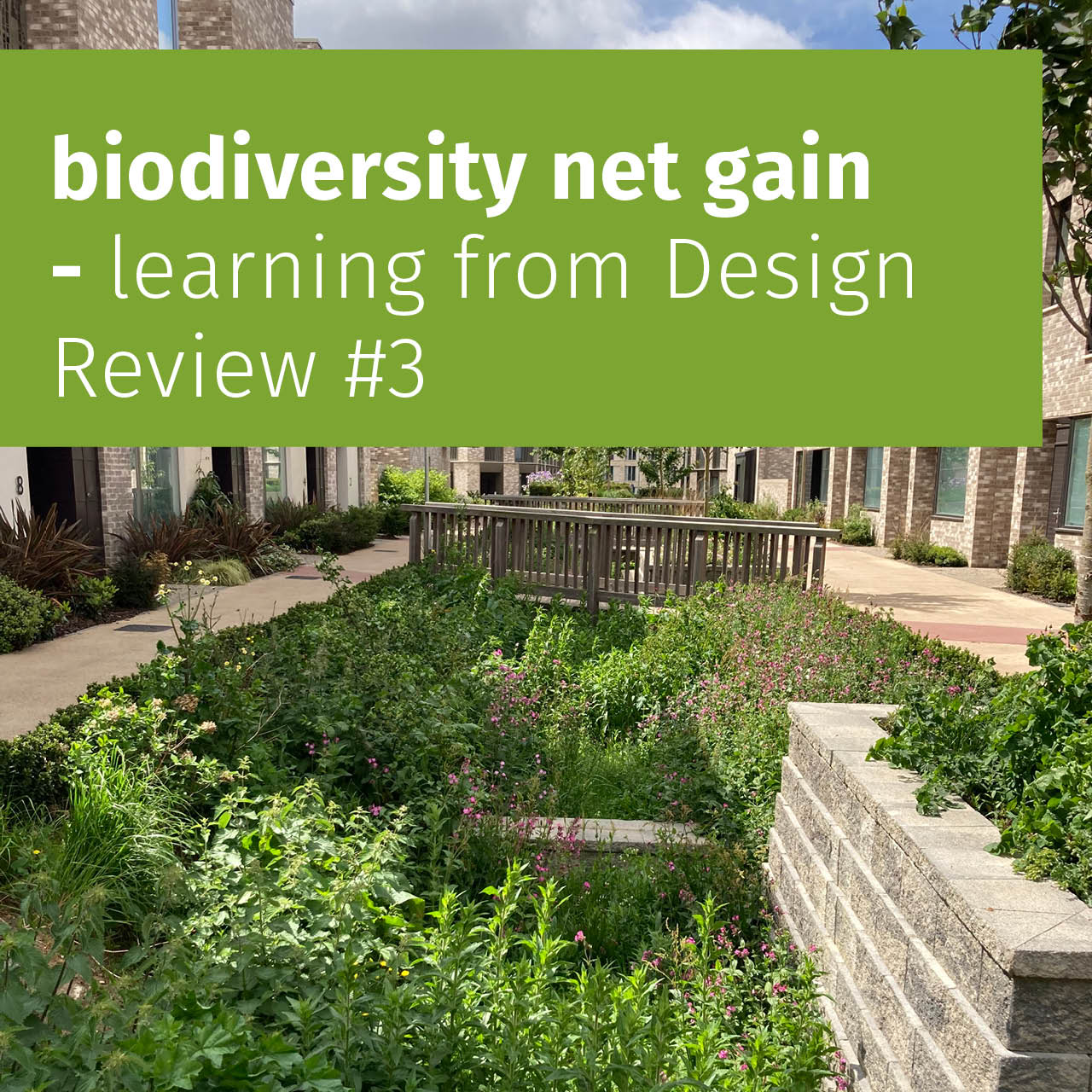
Reflecting on learning from Design Review, we look at the integration of ecology and landscape in design processes and the generation of Biodiversity Net Gain currently reshaping design approaches. Talking with fellow Design Review panellist and landscape architect, Sarah Jones-Morris, the director of Landsmith Associates we highlight the opportunities and challenges of delivering net gains in Biodiversity.
One of the defining features of Design Review panels is that they are multidisciplinary. Over the last decade, I’ve enjoyed working alongside landscape architects, engineers, urban designers and architects to think about how design teams and their clients can maximise the value created through design.
The focus on delivering gains in biodiversity in projects going through planning is currently intensifying – getting this right is often a critical part of what made a successful proposal seen in Loyn + Co’s Field House. Taking a pro-active approach to Biodiversity is becoming a new norm for the UK. Biodiversity Net Gain will become law under the Environment Acct (2021). The new approach, a measurable way of ‘leaving the natural environment better than we found it’(1.) requires the biodiversity value of the existing site and the proposal to be assessed using The Biodiversity Metric devised by Defra to record; habitat area, distinctiveness and condition with a target of generating a 10% net gain.
Sarah reflected on how professionals need to explore a different way of interdisciplinary working. A shift in thinking is required, which is not currently mainstream, to co-create designs in layers. Critical to this is the role of the ecologist. Ecology is a complementary discipline to landscape architecture – “ecology is about nature and landscape architecture is about bringing people and nature together”. Setting up a shared design process where the ecologist and landscape architect are involved early in the design team is crucial to support innovation in integrating nature.
Sarah says the role of landscape strategy in the concept design stage is critical. Particularly as connecting with new and existing ecological habitats can significantly generate more ecological value in proposals. Proposals need to be integrated with their context, creating diverse habitats which are protected, multifunctional and part of an interactive, connected system. For greenfield sites, delivering Biodiversity Net Gain may need to dedicate 40% of the site area to landscape infrastructure. Creating a legacy securing ‘dedicated funding for long term management’(2) is also critical. Sarah highlights how landscape architects, ecologists, architects and planners and engineers need work together: “Thinking of designing in systems, considering how places can be sustained over time or increasingly how systems can be closed to minimise waste, improve water quality and provide wetland habitats” something she explored with +Home, the joint winner of the Home of 2030 Competition for Igloo.
The Building with Nature standard provides detailed ‘how to’ guidance for putting nature at the heart of development and a peer-reviewed accreditation process. Their Case Studies for Elderberry Walk in Bristol by AHMM / Clifton Emery Design for HAB Housing shows how streets can be greener and wilder bringing people in contact with nature and delivering the health benefits doorstep play. The Berkley Group (3.) is an example of a developer owning the challenge by publishing their guidance – in 2016 they set out nine concepts to inform their approach and work with landscape architects and ecologists they recommend working with local communities and Wildlife Trusts.
Often projects come to Design Review because they are in or near a sensitive habitat, Sarah highlights the landscape architect’s role in advising how the building should be sited and massed for example responding to microclimate, ecology, soil, topography etc. In addition to creating green roofs and walls, there are opportunities for buildings to generate habitats as elaborated upon in ‘Designing for biodiversity: A technical guide for new and existing buildings’ (RIBA Publishing 2013, 2nd edition). And there are apparent visual and physical links between buildings and landscapes to be made.
This is one of a series of posts featuring learning from Design Review and reflecting on multidisciplinary working.
… … …